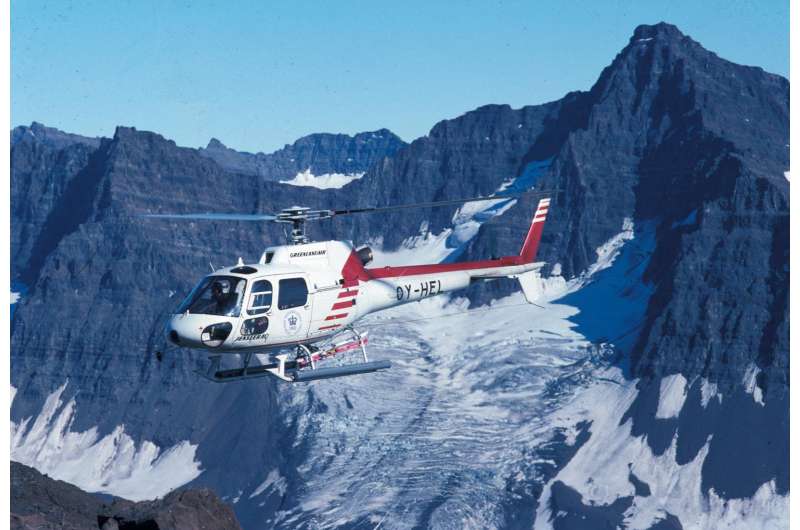Volcanic eruptions drove ancient global warming event

A natural global warming event that took place 56 million years ago was triggered almost entirely by volcanic eruptions that occurred as Greenland separated from Europe during the opening of the North Atlantic Ocean, according to an international team of researchers that includes Andy Ridgwell, a University of California, Riverside professor of earth sciences.
The findings, published today in Nature, refute the more commonly favored explanation that the event, called the Palaeocene-Eocene Thermal Maximum (PETM), was caused by the release of carbon from sedimentary reservoirs such as frozen methane.
"While it has long been suggested that the PETM was caused by injection of carbon into the atmosphere and ocean, the mechanism has remained elusive until now," Ridgwell said. "By combining geochemical measurements and a global climate model that my group has been developing for over a decade, we have shown that this event was caused almost entirely by carbon emissions from the Earth's interior."
Scientists are interested in studying ancient warming events to understand how the Earth behaves when the climate system is dramatically perturbed. During the PETM, atmospheric carbon dioxide more than doubled and global temperatures rose by 5 degrees Celsius, an increase that is comparable with the change that may occur by later next century on modern Earth. While there was significant ecological disruption during the PETM, most species were able to avoid extinction via adaptation or migration. However, the rate of carbon addition during the onset of the PETM lasted for several thousand years, as described in a related Nature Communications paper by Sandra Kirtland Turner, an assistant professor of earth sciences at UCR, whereas current climate change is occurring on a century time-scale.
To identify the source of carbon during the PETM, the researchers studied the remains of tiny marine creatures called foraminifera, the shells of which shed light on the environmental conditions when they lived millions of years ago. By separating the different atomic masses ('isotopes') of the element boron in the foraminifera shells, they tracked how the pH of seawater changed during the PETM. By combining this data with Ridgwell's global climate model, the team deduced the amount of carbon added to the ocean and atmosphere and concluded that volcanic activity during the opening of the North Atlantic was the dominant force behind the PETM.
"The amount of carbon released during this time was vast—more than 30 times larger than all the fossil fuels burned to date and equivalent to all the current conventional and unconventional fossil fuel reserves we could feasibly ever extract." Ridgwell said.
An unexpected finding was that enhanced organic matter burial was important in ultimately sequestering the released carbon and accelerating the recovery of the Earth's ecosystem without massive extinctions.
"Studying the PETM helps us understand the mechanisms that aid recovery from global warming, thereby helping researchers reduce the uncertainties surrounding the Earth's response to global climate change," Ridgwell said. "While it is encouraging that most ecosystems were able to adapt during the PETM, today's global temperature could be increasing at a rate that is too fast for plants and animals to adjust."
More information: Marcus Gutjahr et al, Very large release of mostly volcanic carbon during the Palaeocene–Eocene Thermal Maximum, Nature (2017). DOI: 10.1038/nature23646
Journal information: Nature , Nature Communications
Provided by University of California - Riverside




















